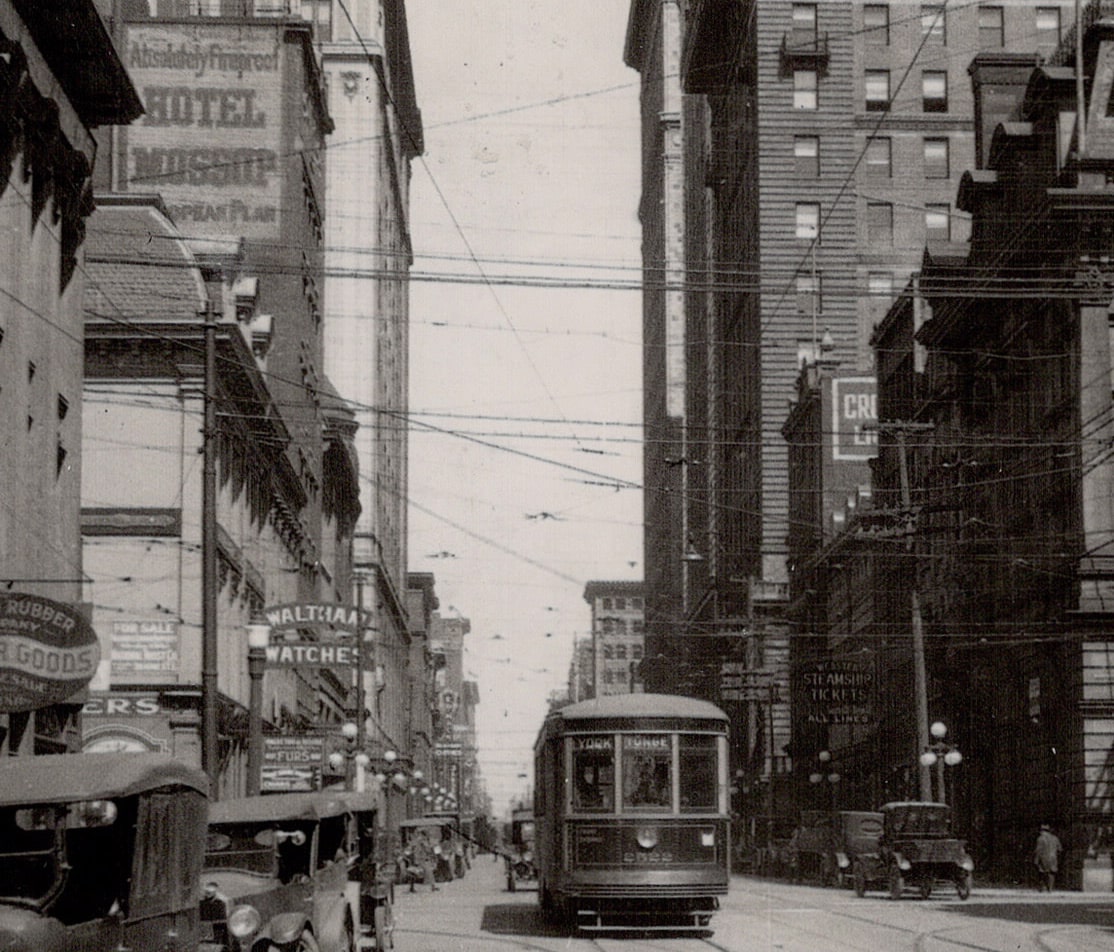

You are using an outdated browser. Please upgrade your browser to improve your experience and security.

Following in the wake of Canada’s sweeping prohibition laws, which were active in Ontario from 1916 to 1927, countless hotels, taverns, and bars across the province went out of business. Unfortunately for Fred Mossop, his establishment, equipped with not one, but two large saloons, was not to be spared the financial ruin synonymous with the time. Reporting on the hotel’s fate, The Globe was sympathetic to Mossop’s predicament, “The city and travelling public [to be] deprived of the service of one of the best conducted institutions of the kind in the Dominion.” Fred Mossop was quoted as taking the ill news in stride, staging, that while he was “[sorry that he] had to close” and that while he had to ” go out after having lost considerable money, practically the earnings of a lifetime, [he was] leaving the business with [his] health and many good friends.” A month later, hundreds of curious bargain hunters flocked to the lobby of the Mossop Hotel on the occasion of its widely-advertised auction at which everything from furniture to stationary were sold to the highest bidder.
The following year, as the Spanish influenza pandemic of 1918 took its grip upon cities great and small around the globe, the hotel was brought into service once again, this time as a makeshift hospital. Selected by local physicians owing to the sanitary conditions provided by its abundance of fireproof tile flooring, the Hotel Mossop, along with the Arlington Hotel, was requisitioned by the City to serve as a temporary hospice. Rented by the City at a considerable cost from the hotel’s new financial backers, philanthropist and business magnate E.P. Taylor [1901-1989] among them, what proved to be the first of many rebirths for the hotel was also one of its most significant.
Under new management the proceeding July, The Toronto Daily Star reported that the Hotel Mossop was in the midst of a major transformation. The new proprietor, the internationally-experienced Mr. Bernham G. Hines, having had considerable success with several fine establishments as a top manager for the United Hotels Company of America, was said to be planning to conduct the hotel according to the “European plan”. Set to keep the old name, the Hotel Mossop’s grand re-opening was similarly reported in The Globe, its rebirth to include the addition of a European-style cafe – undoubtedly in response to the commercial restraints of prohibition. True to his word, the new and improved Hotel Mossop retained its name, its updated signage – including Hines’ “European Plan” – writ large over Yonge Street.
For the next decade, the Hotel Mossop once again became a fashionable destination for local and travelling businessmen. The newspapers of the day frequently ran advertisements for the lunch and dinner menus on offer at the hotel, with special attention given to the annual Christmas and New Years’ Eve parties hosted there throughout the 1920s. One such ad, for the Hotel Mossop’s 1925 “Special Christmas Dinner”, featured a delectable array of fine dining, including fruit cocktails, baked Ontario trout with tartar sauce, roast celery dressed Vermont turkey with cranberry sauce, English plum pudding, ice cream, and live music courtesy the Ladies’ Orchestra – all for $2 dollars [$30 today]. A more family-friendly affair in its prohibition-era second life, the Hotel Mossop’s European-inspired redesign included the creation of the Crystal Room, advertised upon its debut in 1925 as a “charming place for luncheon…its mahogany panelled walls, soft green-coloured ceilings, Chinese blue floor coverings and sparkling crystal fixtures provid[ing] the proper atmosphere of the always appetizing ‘Mossop’ dinner”. The Crystal Room was joined by the Blue Room, “for the convenience of ladies and their escorts”, the separate upstairs dining room, “furnished in restful blue tones… a most inviting spot where friends may gather for an enjoyable luncheon”. Alas, the good times did not go on forever. The Hotel Mossop once again found itself in financial difficulties, the hotel forced to close its doors in 1927.